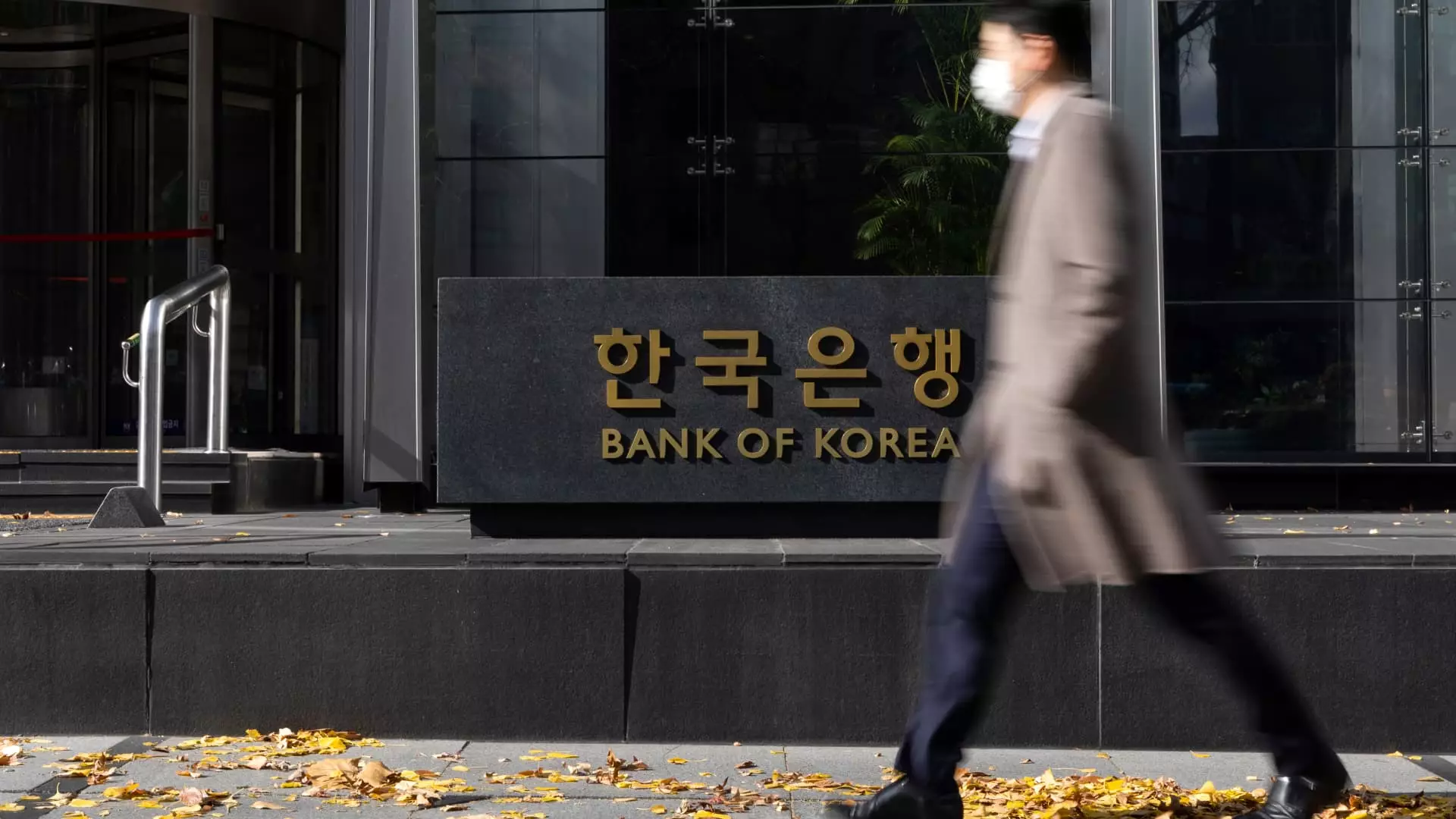On Thursday, the Bank of Korea (BOK) surprised markets by reducing its benchmark interest rate by 25 basis points. This move comes in the context of ongoing economic challenges and is notable for being the second consecutive rate cut, a rarity not observed since 2009. Previously, the BOK lowered rates by 25 basis points in its October meeting, signaling a shift in policy amidst growing concerns over sluggish economic growth. Analysts had largely anticipated a hold at the current rate of 3.25%, reflecting widely held expectations regarding the central bank’s cautious approach to monetary adjustments in light of international currency pressures.
The impetus for the recent rate cut can be traced to disappointing economic indicators, particularly a third-quarter GDP growth of only 1.5% year on year. This figure fell short of the 2% forecasted by economists, raising alarms about the trajectory of the South Korean economy. In response to this underwhelming performance, the BOK has revised its GDP projections downward, now anticipating a growth rate of 2.2% for 2024 and 1.9% for 2025. Such adjustments underscore the central bank’s concern regarding stagnation and the need for a more aggressive monetary policy to foster recovery.
Interestingly, despite the rate cut, inflation appears to have stabilized, with a recent reading of 1.3% being the lowest since February 2021. This stabilization may provide some relief to policymakers; however, the BOK has expressed that external pressure on the economy has intensified, necessitating further action. The dichotomy of declining inflation alongside low growth presents a complex challenge for the BOK, which has to balance stimulating the economy with the risk of further currency depreciation.
The South Korean won has faced significant headwinds, plummeting to a two-year low against the U.S. dollar. Economists had predicted that the BOK would be cautious with rate cuts given this context, especially as the currency weakness could exacerbate inflationary pressures by increasing the cost of imports. BOK Governor Rhee Chang-yong previously indicated that the rapid depreciation of the won would be pivotal in determining the timing and scale of future rate cuts, noting the urgency of addressing this challenge promptly.
As South Korea navigates these economic tumultuous seas, further rate cuts may be on the horizon as the BOK aims to mitigate risks to growth. Policymakers will need to remain agile, weighing the delicate interplay between stimulating the economy and safeguarding the currency’s stability. The global economic environment and trade dynamics will also play crucial roles in shaping future decisions, as South Korea remains heavily reliant on exports.
The BOK’s recent rate cuts reflect a recognition of the significant challenges facing the South Korean economy. With revised growth forecasts and ongoing currency struggles, the path forward will require careful consideration and a willingness to adapt as conditions evolve in this ever-changing economic landscape.

